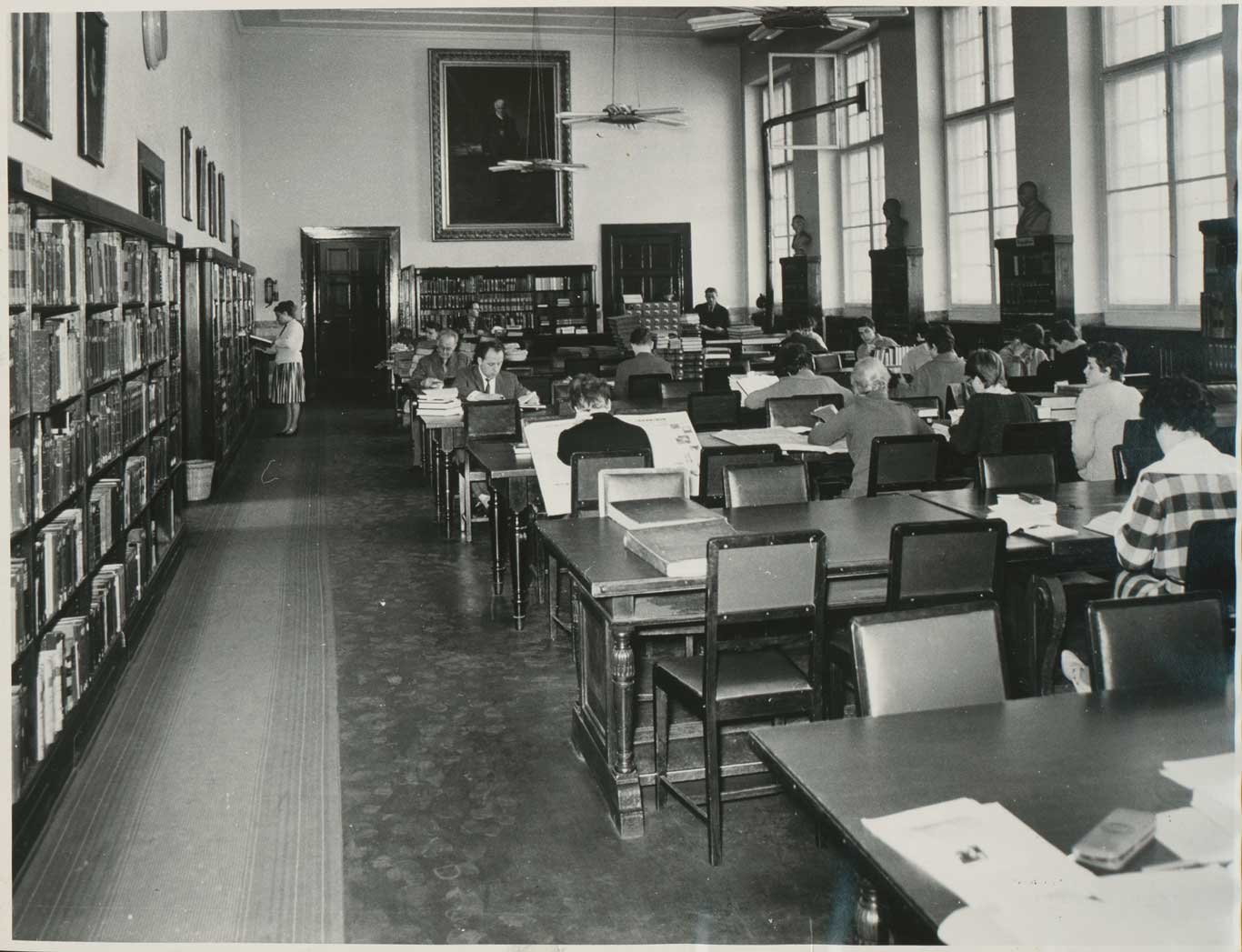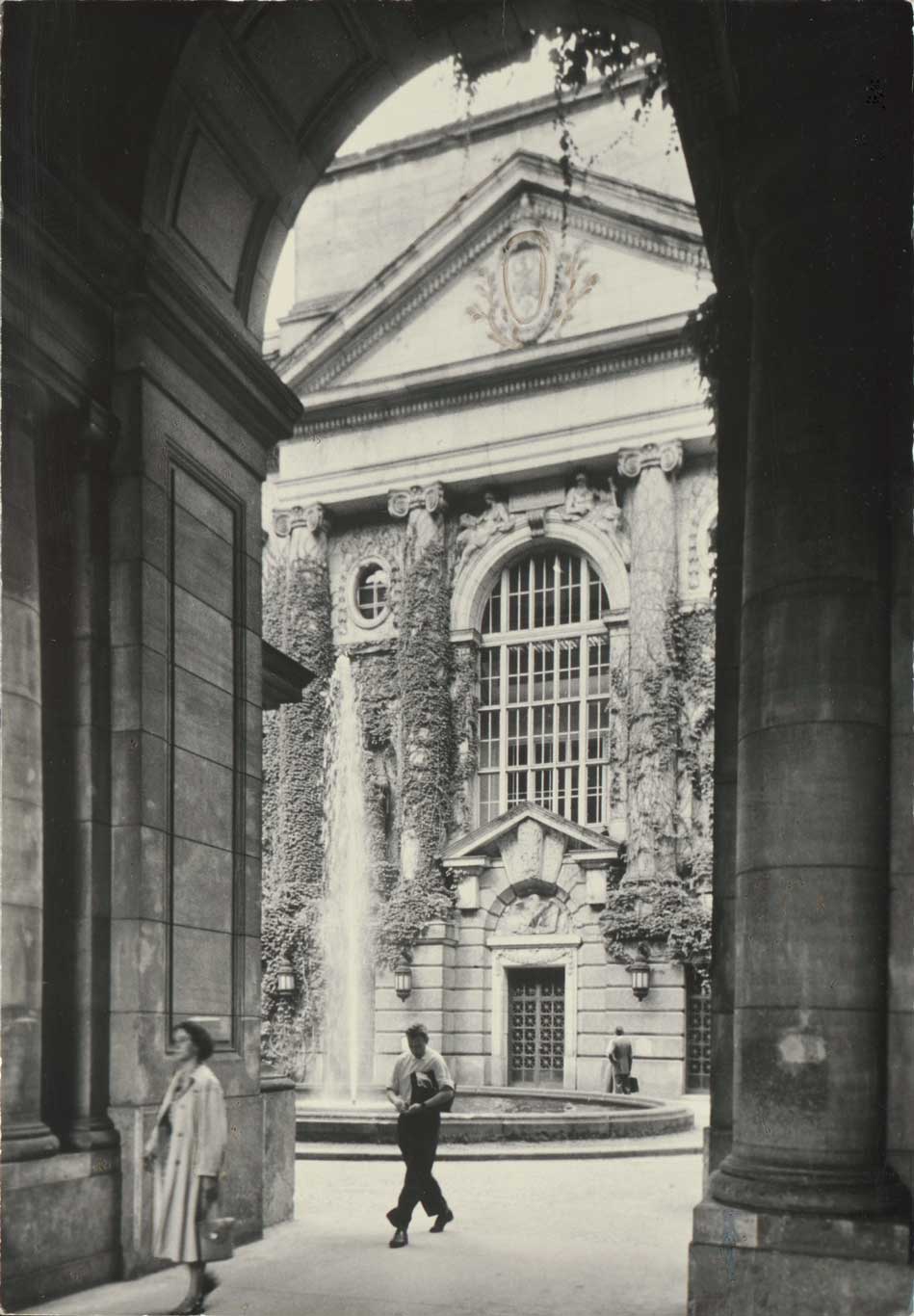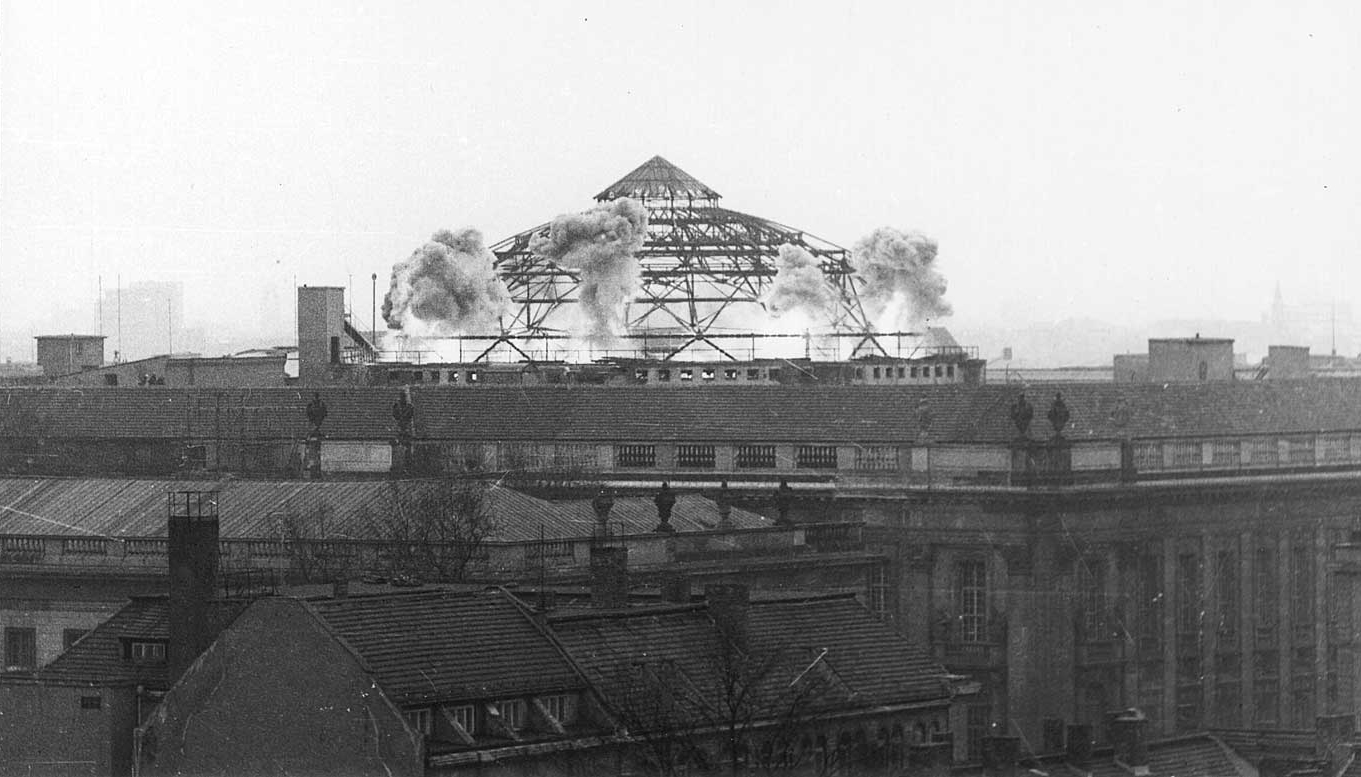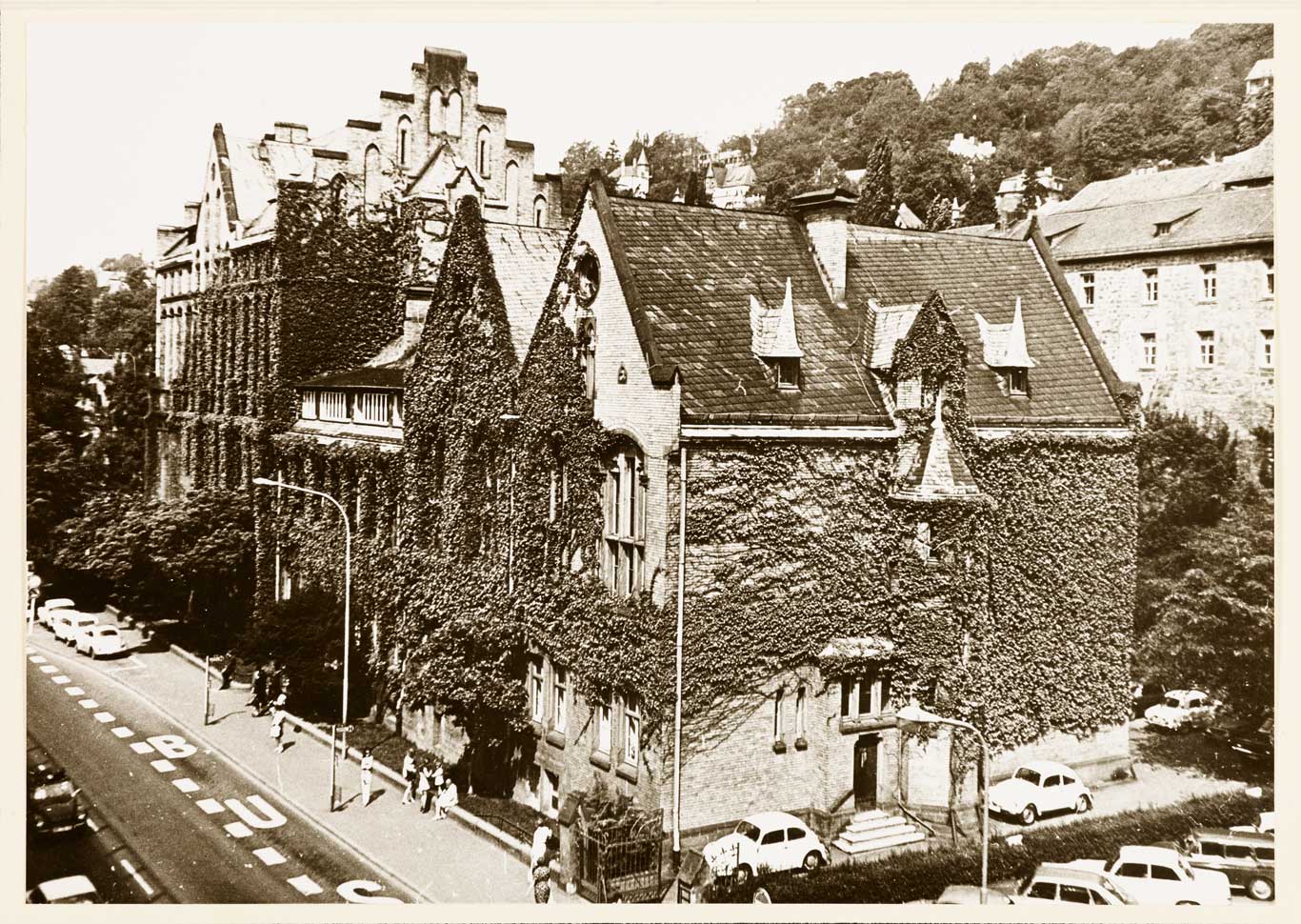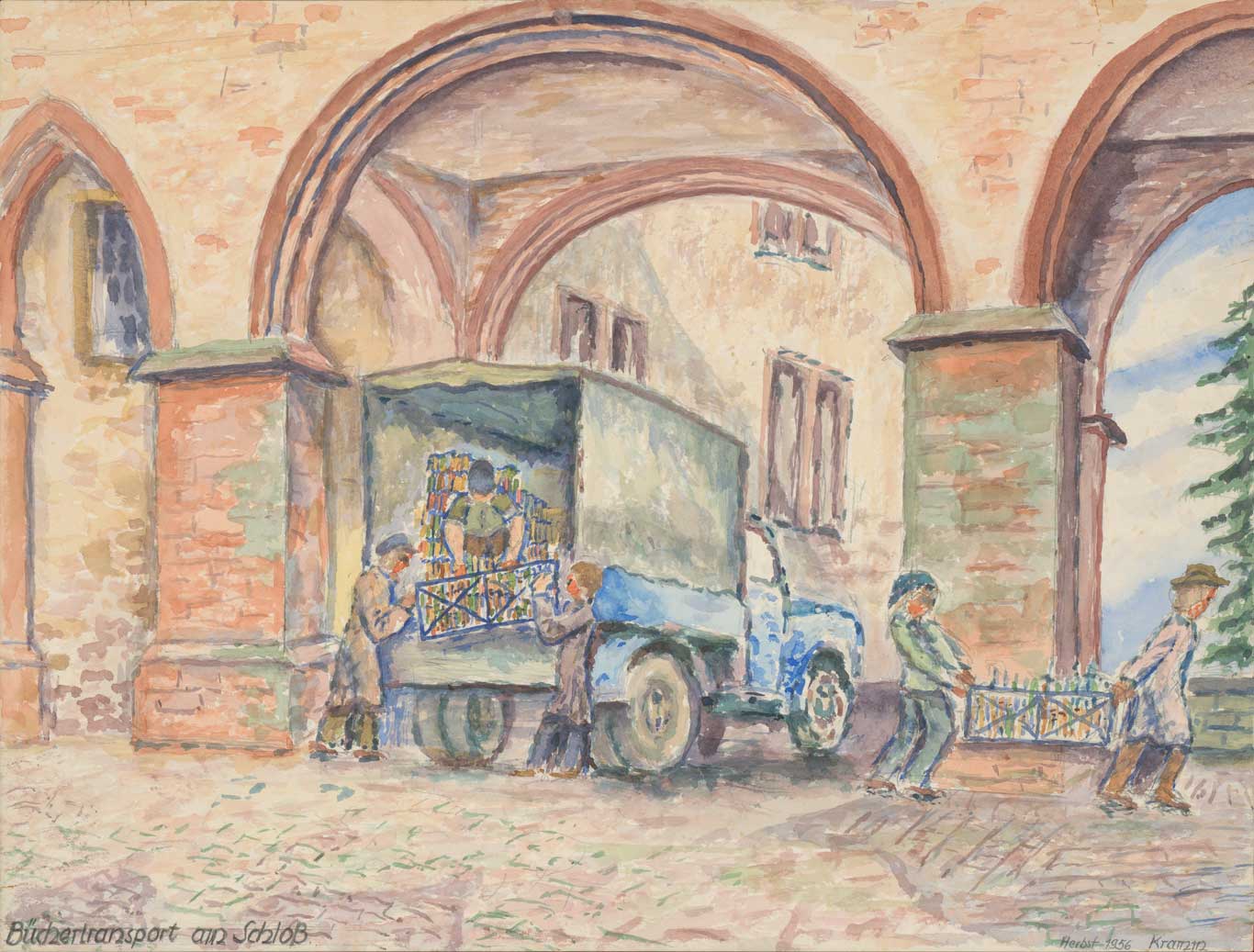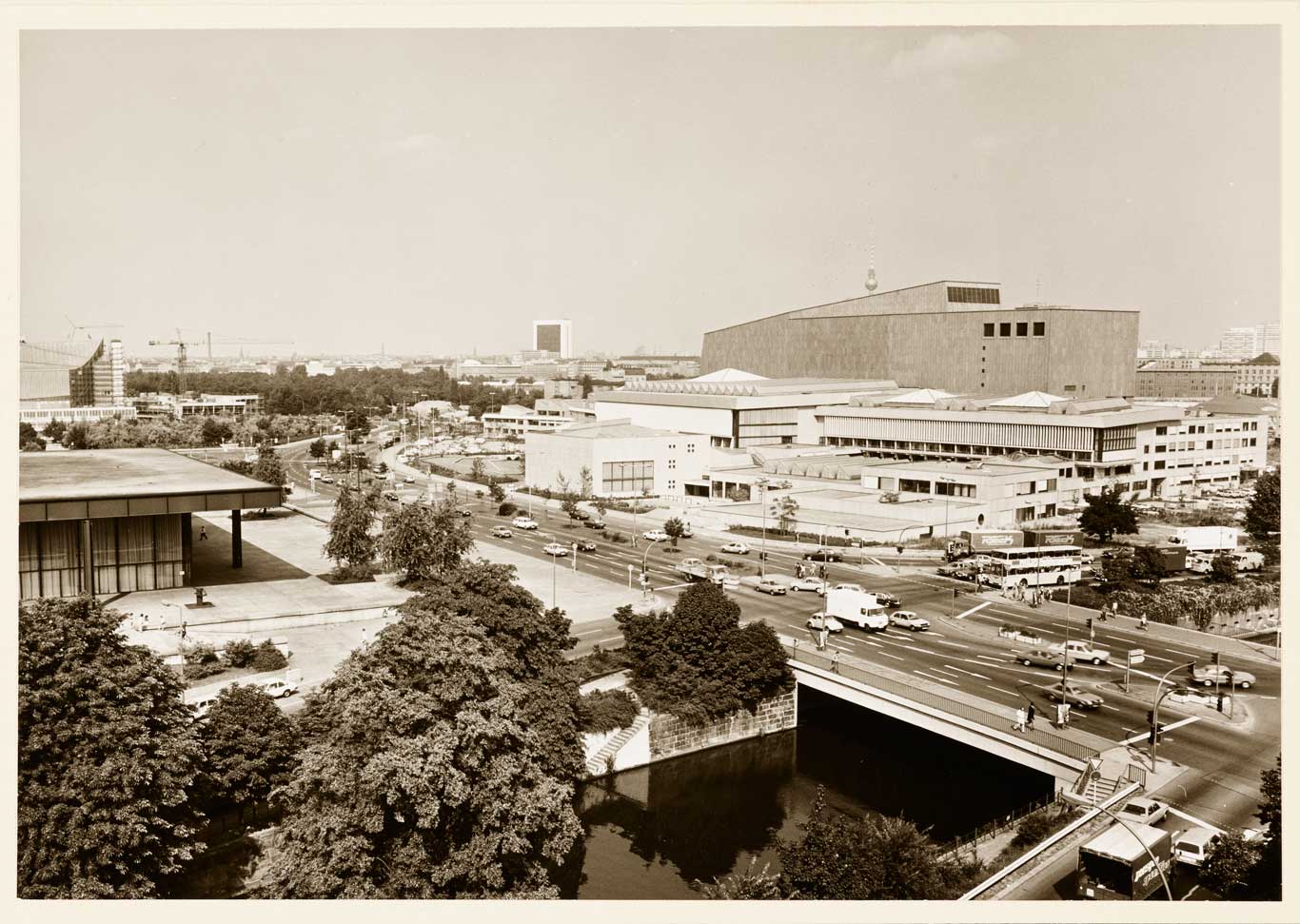16
The library in East and West after the Second World War
Reconstruction and a new beginning
Main reading room of the Deutsche Staatsbibliothek, Berlin, 1963.
SBB-PK
From the Öffentliche Wissenschaftliche Bibliothek to the Deutsche Staatsbibliothek
In the first few months, the library focussed on turning the building back into a working establishment and on retrieving the widely dispersed collections. In 1949, around 900,000 of the 3 million volumes were returned from the distributed locations to the Haus Unter den Linden. In 1957, another wave of valuable collections was brought back to East Berlin from the Soviet Union and in 1965, Poland sent back 90,000 scientific and technical publications as well as magazines and newspapers.
From the Öffentliche Wissenschaftliche Bibliothek to the Deutsche Staatsbibliothek
Unlike hardly any other library in Germany, the Berlin Staatsbibliothek was affected by the consequences of World War II. The building at Unter den Linden had been heavily damaged during the war, the domed reading room was unusable and the library’s holdings were dispersed to many evacuation sites. After the end of the war, the most important measures were to safeguard the fabric of the building and to return the holdings from evacuation sites on the territory of the Soviet occupation zone. On 1 October 1946 the Öffentliche Wissenschaftliche Bibliothek (ÖWB – Public Scientific Library) re-opened and in 1954 it was renamed Deutsche Staatsbibliothek (DSB – German State Library). The DSB was the central universal research library of the German Democratic Republic (GDR) and in cooperation with the Deutsche Bücherei in Leipzig it fulfilled the tasks of a National Library. The library was responsible for collecting German prints published before 1913 and acquiring research literature of foreign countries.
Court fountain in the Haus Unter den Linden, Berlin, 1960s.
SBB-PK
The building’s renovation was completed in 1955; however at the centre of the library building, the lecture hall beneath the dome still lay in ruins. 20 years later, what little was left of the lecture hall was torn down. In its stead, four depot towers were erected in order to solve the library’s space and storage difficulties at the beginning of the 1980s.
Demolition of the ruins of the domed lecture hall, Berlin, 1975. SBB-PK, Building archive
From the Hessische Bibliothek to
the Staatsbibliothek Preußischer Kulturbesitz
The Westdeutsche Bibliothek in Marburg
After the end of World War II and the dissolution of Prussia, the evacuated holdings of the Staatsbibliothek found in the American occupation zone came to the city of Marburg an der Lahn. As of 1946, the new home of these holdings was initially called Hessische Bibliothek. Beginning in 1949, the German Länder financed the Hessische Bibliothek as a cross-regional institution and renamed it Westdeutsche Bibliothek. In 1948, manuscripts and prints that were stored in the French occupation zone were transferred as ‘depot’ to the university library of Tübingen.
During the war, most of the printed editions and a significant part of the rare items were transported to locations in the west and southwest of Germany. The books from the American occupation zone were stored in Marburg/Lahn in the Wilhelmsbau of the Marburger Schloss and in the University Library building. In 1946, these collections could be accessed by the public at the so-called Hessische Bibliothek, which became the Westdeutsche Bibliothek in 1949. Any collections originating from the French occupation zone were stored in a depot at the University Library of Tübingen.
University Library Marburg, 1978. SBB-PK
Heinrich Kramm: Transportation of books at the castle, watercolour, Marburg, 1956. © Heinrich Kramm
In 1962, the Stiftung Preußischer Kulturbesitz, which was founded in 1957, took charge of the books in the Westdeutsche Bibliothek and in the depot in Tübingen. These collections were taken to West Berlin to the recently renamed Staatsbibliothek Preußischer Kulturbesitz and stored in a new building, constructed according to the plans of Hans Scharoun between 1967 and 1978.
Staatsbibliothek Preußischer Kulturbesitz, new building from the southwest perspective, Berlin, 1974. SBB-PK

